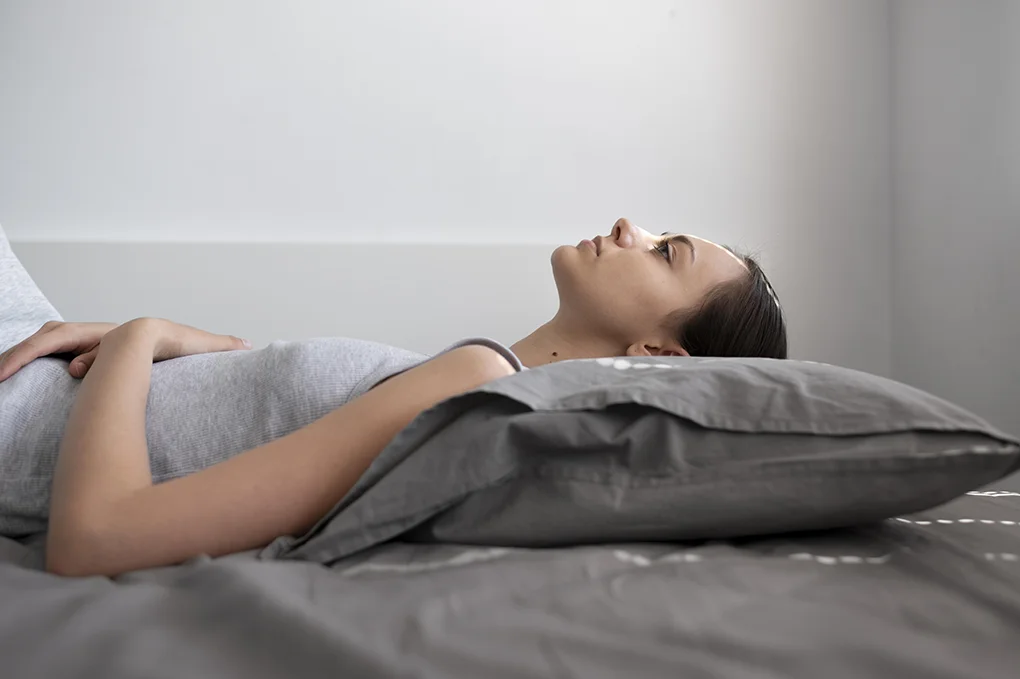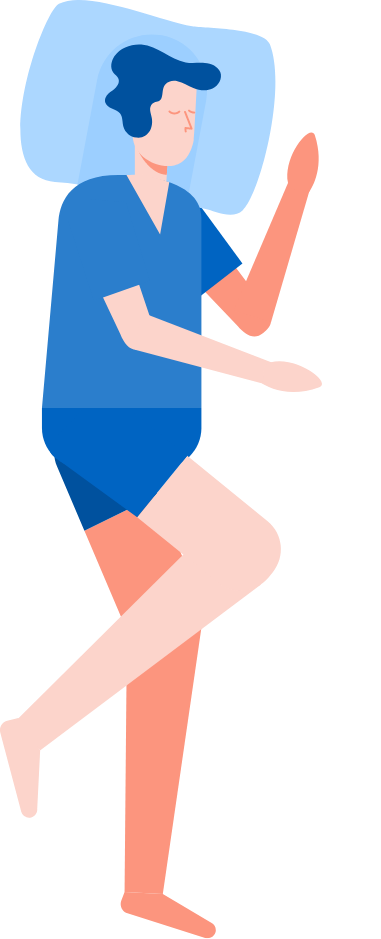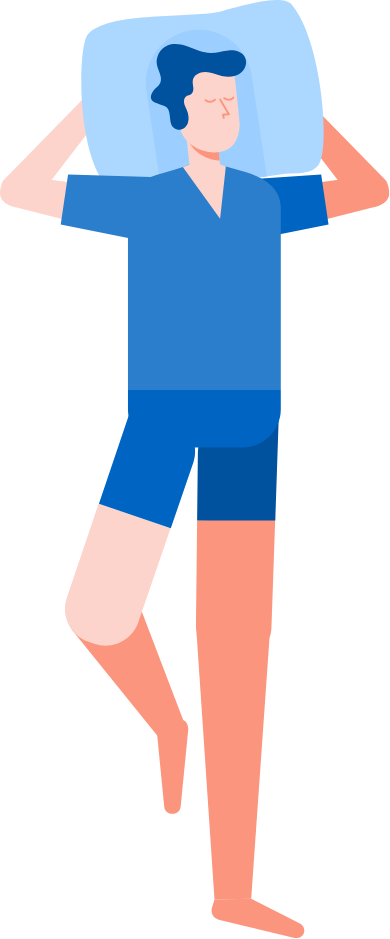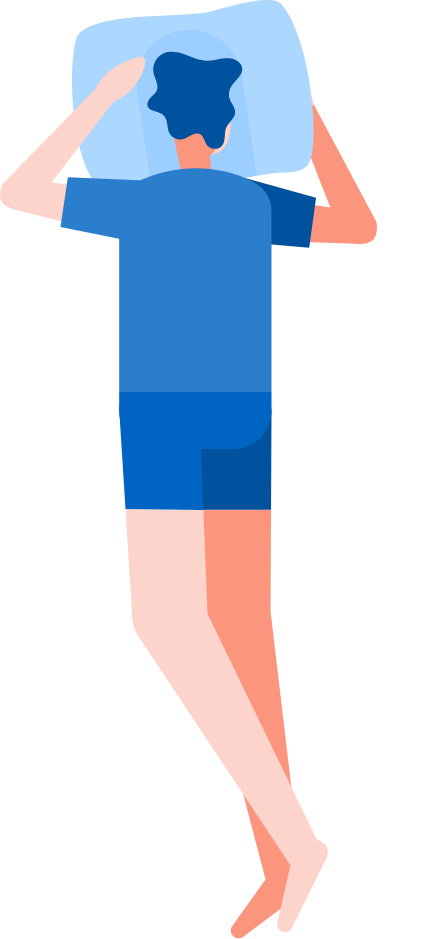Best Sleeping Positions for People with Breathing Problems
Getting a good night’s sleep is essential for overall health, but for people with breathing conditions such as sleep apnoea, asthma, chronic obstructive pulmonary disease (COPD), or even frequent snoring, sleep can be a challenge. Your sleeping position plays a crucial role in how well you breathe during the night. The right posture can help maintain open airways, reduce snoring, and improve lung function, while the wrong one can exacerbate respiratory issues.
If you’ve been asking yourself how to sleep better with COPD, or are wondering what sleep apnoea sleeping positions are best, this blog explores the best sleeping positions for breathing problems, discusses which ones to avoid, and provides actionable tips for improving sleep quality.

Why Sleeping Position Matters for Breathing
The way you position your body while sleeping can significantly impact airflow, oxygen intake, and lung expansion. Poor posture can lead to:
- Airway Obstruction: This can cause snoring and worsen sleep apnoea symptoms.
- Lung Compression: Certain positions may restrict lung expansion, leading to shallow breathing.
- Nasal Congestion: Lying flat can cause mucus buildup, making it harder to breathe.
Adjusting your sleeping position can be an effective way to improve breathing while sleeping and enhance overall sleep quality.
Best Sleeping Positions for People with Breathing Problems

Side Sleeping (Especially Left Side)
Side sleeping is one of the best sleeping positions for breathing problems. It helps keep the airway open and reduces the risk of airway collapse, particularly in people with sleep apnoea. Sleeping on the left side has additional benefits, as it can reduce acid reflux, which may contribute to nighttime breathing difficulties.
Benefits:
- Prevents airway obstruction, reducing snoring and sleep apnoea symptoms.
- Helps prevent acid reflux, which can cause nighttime coughing and breathing discomfort.
- Enhance lung function, particularly in individuals with COPD or asthma.

Elevated Head Position (Using an Adjustable Bed or Wedge Pillow)
Sleeping with your head elevated can help reduce nasal congestion, snoring, and symptoms of gastroesophageal reflux disease (GERD). This position is beneficial for individuals who experience difficulty breathing due to fluid buildup or airway obstruction.
How to do it:
- Use an adjustable bed or a wedge pillow to keep your head elevated at a 30–45-degree angle.
- Ensure your neck and spine remain aligned to prevent discomfort.

Supine (Back Sleeping) with Proper Head Support
Lying on your back can be suitable for some individuals if the head and upper body are slightly elevated. This position may help those with nasal congestion or sinus issues, as it allows mucus to drain more easily. However, back sleeping is not ideal for people with sleep apnoea, as it can cause airway collapse.
Tips for back sleepers:
- Use a supportive pillow to keep your head slightly raised.
- Consider a CPAP machine if you have sleep apnoea and prefer sleeping on your back.

Prone (Sleeping on the Stomach)
Although not commonly recommended, sleeping on the stomach can be beneficial for some individuals with severe respiratory conditions. Hospitals sometimes place critically ill patients in a prone position to improve oxygenation, particularly for conditions like severe COVID-19.
Considerations:
- This position may reduce snoring and improve airflow but can strain the neck and spine.
- A thin or no pillow under the head can help maintain spinal alignment.
Worst Sleeping Positions for Breathing Problems
Flat on the Back
Lying completely flat on your back is one of the worst positions for sleep apnoea and snoring. Gravity pulls the tongue and soft tissues back into the throat, blocking the airway and leading to interrupted breathing.
Foetal Position (Curled Up Too Tightly)
While side sleeping is generally beneficial, curling up too tightly can restrict lung expansion and lead to shallow breathing. This can be problematic for individuals with COPD or asthma.
Solution:
- If you prefer the foetal position, try to keep your body slightly more extended to allow better lung expansion.
Additional Tips for Better Sleep with Breathing Conditions
In addition to choosing the right sleeping position, implementing these strategies can further improve breathing while sleeping:
- Use a Good Pillow and Mattress: Proper spinal alignment is essential for optimal breathing.
- Invest in a Humidifier: Dry air can irritate the airways, making breathing more difficult, especially for those with asthma or COPD.
- Maintain a Healthy Weight: Excess weight can contribute to airway obstruction and worsen sleep apnoea symptoms.
- Avoid Alcohol Before Bed: Alcohol relaxes the throat muscles, increasing the risk of snoring and airway collapse.
- Practise Breathing Exercises: Techniques such as pursed-lip breathing and diaphragmatic breathing can strengthen the lungs and improve airflow.
When to Seek Professional Help
If changing your sleeping position and implementing lifestyle modifications do not improve your breathing at night, it may be time to seek professional help. Persistent symptoms such as loud snoring, frequent awakenings, excessive daytime fatigue, or shortness of breath may indicate an underlying sleep or respiratory disorder.
At North Brisbane Sleep and Thoracic, we specialise in diagnosing and treating sleep-related breathing issues.
Our services include:
- Comprehensive sleep studies
- CPAP therapy for sleep apnoea
- Lung function tests for asthma and COPD
- Tailored treatment plans to improve sleep and respiratory health
If you’re struggling with nighttime breathing difficulties, don’t wait to seek help. Book a consultation with North Brisbane Sleep and Thoracic to assess your sleep and respiratory health.
Contact us to book an appointment
Visit us at either our Clayfield or North Lakes location and experience compassionate care in a comfortable environment, tailored to meet your unique needs.

